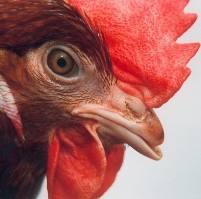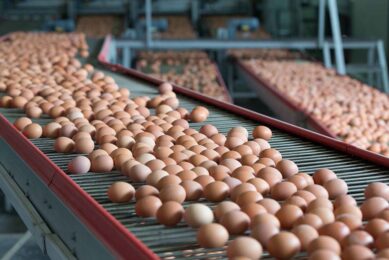PSA: Impact of layer hen housing systems inconclusive

In the face of current pressures on the egg industry to shift from conventional to non-cage housing systems for layers, no scientific basis has been determined for believing that such a move would improve either egg safety or quality, according to the Poultry Science Association (PSA).
Given the conflicting nature of the findings of a number of recent studies on the issue in both the US and the European Union, such a move could conceivably have the opposite effect.
PSA based its comments on a white paper to be published in early 2011 in the journal Poultry Science, “The Impact of Different Housing Systems on Egg Safety and Quality”, that provides a comprehensive summary of research on various layer housing systems and their effects on egg safety and quality. The authors of the paper conclude that “[a] move from conventional cages to either an enriched cage or a noncage system may affect the safety or quality, or both, of the eggs laid by hens raised in this new environment…An understanding of these [various systems’] different effects is prudent before any large-scale move to an alternative housing system is undertaken.”
PSA President Dr. Michael S. Lilburn concurred, noting:
“Housing is an emotional issue, and the question of which is preferable – conventional vs. noncage – clearly hinges on a wide variety of important issues. But given that the very reason for the existence of layer housing systems is the production of safe and high quality eggs for human consumption, it is PSA’s view that any decisions involving changes that might impact these parameters of egg production should be objective and science-based. Unfortunately, there is currently no consensus in the scientific community as to which side the weight of the evidence favours, so further work needs to be done before there is any move to follow the EU’s ban of conventional cages here in the US.”
The EU voted to ban traditional cage systems in 1999 and is scheduled to have completed the transition to noncage housing by the start of 2012.
Safety issues
The key safety issues regarding eggs meant for human consumption relate to the possibility of microbiological and chemical contamination. The overriding microbiological concern, according to the authors of the white paper, involves minimising the potential for possible human infection by Salmonella, which can cause severe gastrointestinal distress or, in extreme cases, death. While thorough heating through cooking destroys Salmonella, good protocol calls for taking steps to minimise the presence of the bacterium throughout the egg-to-table production process.
Unfortunately, data on the prevalence of Salmonella in cage vs. noncage housing systems is often contradictory. For example, a number of recent studies out of the EU show a higher incidence rate in traditional housing systems. However, one EU study showed a higher incidence rate in free range systems, while a second showed no difference.
By contrast, a study in California showed a much higher incidence rate of Salmonella enteritidis (SE)-contaminated eggs among free range birds than birds raised in traditional cage systems. A nationwide study conducted by the USDA showed that pullets (pre-lay hens) that were raised on the floor of a housing facility had a five-fold higher incidence rate of SE than cage-raised pullets.
The authors of the white paper concluded that “[m]any factors affect the prevalence of Salmonella enteritidis (SE) within a flock…[and] the superiority of one housing method over another remains to be determined.” They also note that, while many similarities exist between E.U. and U.S. egg production systems, there are also significant differences. Care must therefore be exercised when applying results from one system to another.
Chemical contamination and contamination by pesticides are also possible egg safety factors that may be impacted by the choice of housing system. The authors of the white paper cite multiple studies in the E.U. showing that, for example, free-range eggs have a higher incidence of PCBs (polychlorinated biphenyls or dioxins) and heavy metals than conventional cage hens. They also cite one study in Brazil which showed an incidence rate of the now-banned pesticide DDT in free-range eggs that was 1000x that of caged hens, even though DDT had not been used at the location of the free-range site in the last nine years, pointing to the environmental persistence of some chemicals and, say the authors, the need for great care to be taken when considering land to be used for free-range housing.
Quality Issues
The quality of eggs produced under different housing systems might also vary, though again, the evidence is conflicting. Egg quality is measured along a number of parameters including size, functional and nutritional quality, and the integrity of an egg’s shell, yolk and albumen.
According to the white paper’s authors, one study showed fewer cracked eggs in free-range than conventional housing, while a separate study yielded precisely the opposite conclusion. A different study concluded that free-range eggs have higher levels of Vitamin E and omega-3 fatty acids than conventional eggs, while yet another concluded that there were no differences between conventional cage, free-range or floor-raised eggs. Even studies originating from the same laboratory yielded contradictory results when investigating internal quality issues.
USDA researcher Dr. Peter Holt, the lead author of the white paper, noted in a presentation on the authors’ findings that: “Many factors besides housing type affect the safety and quality of eggs. As a result, the effect of housing type on egg safety and quality is not clear cut. These [effects] need to be taken into account before hard conclusions can be made [regarding the efficacy of different housing systems vis-à-vis egg safety and quality].”
Related website
• Poultry Science Association (PSA)
Join 31,000+ subscribers
Subscribe to our newsletter to stay updated about all the need-to-know content in the poultry sector, three times a week. Beheer
Beheer








 WP Admin
WP Admin  Bewerk bericht
Bewerk bericht